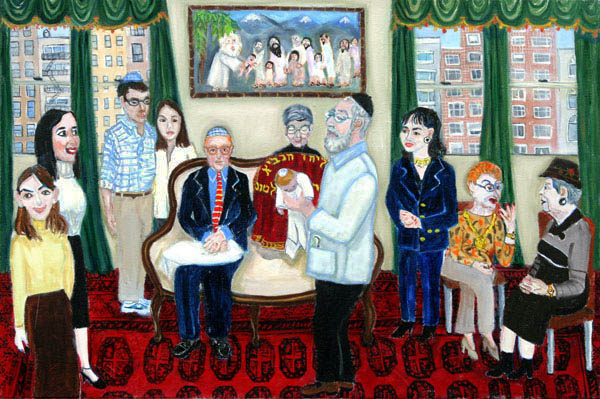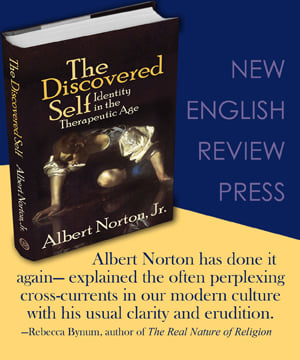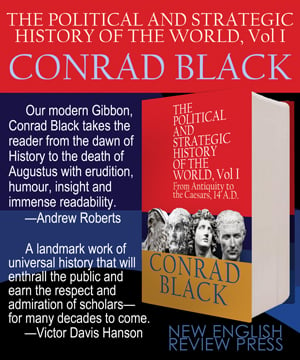by Petr Chylek (January 2025)

According to the Bible’s Old Testament, God said, “Let us make Man in Our image and after Our Likeness.” (Genesis 1:26) However, in the next verse (Genesis 1:27) we read: “So God created Man in his image.” [1]. No more mention of being in His likeness. Several Jewish Midrashim [2] discuss whether God should or should not create a Man. Over the decades, I have attended services at the Catholic Church as well as meetings in Synagogues where priests and rabbis claimed that God created man in His image and in His likeness. Many people grasp only a foggy image without paying too much attention to details like these.
What is the difference between a man created in God’s image and His likeness, and a man created only in His image? A man created in God’s image and His likeness has no free will. He acts always the same way a God would. This is not what God had in mind. Thus, He decided to change His original intention and created a man only in His image. Such a man has the potential to act the same way God would. However, he is free to do it, or not do it.
Unfortunately, this distinction between a man made in the image and likeness of God and a man created just in the image of God has escaped many of today’s teachers in churches and synagogues. Yes, people are made in the image of God as the Bible says, but they have to work throughout their lives; they have to use their free will if they want to make themselves to be in the likeness of God.
In the beginning, after the creation, God let humans on their own, relying on their inborn intuition to make the right decisions. Soon He learned that this did not work (Genesis 3-10). Eve ate the fruit and also gave it to her husband, Cain killed his brother, and robbery flourished in the time of Noach. During the flood God realized that some supervision was needed and He decided to make a deal (covenant) between Himself and humanity.
The real supervision started with Abram. The covenant (BRIT in Hebrew) is not a one-way promise, it is an agreement between the parties specifying what each party would do. The covenant between Abram and his descendants, and God, is described in Torah in Chapter 17 of Genesis:
When Abram was ninety-nine years old, God appeared to Abram and said to him, “I am the Almighty God (EL SHADAI in Hebrew), walk before Me and be perfect (TAMIM). I will set My covenant between Me and you… (Genesis 17:1-2)
I will ratify My covenant between Me and you and between your offspring after you, through their generations, as an everlasting covenant, to be a God (ELOHIM) to you and to your offsprings after you. (Genesis 17:7)
You shall circumcise the flesh of your foreskin, and that will be the sign of the covenant between Me and you…(Genesis 17:11)
This is clearly an agreement between two parties. The text specifies the duties of each of the parties in the covenant. What were the duties of Abraham and his descendants? It is stated in the first part of the above statement: “Walk before Me and be perfect.” What was God’s part of the covenant? “… to be a God to you and to your offspring after you.” This means that God would supply what was needed for their lives and He would guide and protect them. Thus, what part was left for circumcision? The above quote states clearly “You shall circumcise … and that will be the sign of covenant …” The circumcision is not a covenant, as is taught by many teachers of religion, it is a sign of covenant, like a signature on legal documents. A signature does not fulfill a part of the agreement, it only signifies that a party has accepted the agreement and that they are obliged to fulfill it.
An earlier covenant was agreed on by God and Noach. Earlier in Genesis we read:
Noach was righteous (TZADIK) and perfect (TAMIM) in his generations. Noach walked with God… (Genesis 6:9)
Now the earth has become corrupt before God; and the earth had become filled with robbery. And God saw the earth and behold it was corrupted, for all flesh has corrupted its way upon the earth. God said to Noach, “The end of all flesh has come before Me , for the earth is filled with robbery through them, and behold, I am about to destroy them from the earth.” (Genesis 6:11-13)
God informed Noach about the coming of the flood, and instructed him to build an ark for himself and his family and pairs of animals. All the rest of the inhabitants of the earth died in the flood. After the flood receded God said to Noach:
I establish my covenant with you and your offspring after you … Never again shall all flesh be cut off by the waters of the flood, and never again shall there be a flood to destroy the earth. And God said: This is the sign of the covenant that I give between Me and you and every living being that is with you, to generations forever.
I have set my rainbow in the cloud and it shall be a sign of the covenant between Me and the earth. And it shall happen when I place a cloud over the earth, and the bow will be seen in the cloud, I will remember my covenant between Me and you and every living being among all flesh, and the water shall never again become a flood to destroy all the flesh. (Genesis 9:9-15)
Thus, the rainbow is a sign of the covenant between God and Noach, not a covenant itself. Similarly, the circumcision is a sign of the covenant between God and Abram, not a covenant itself.
We note that Noach already satisfied what was required of Abram. Abram was told: “Walk before Me and be perfect.” (TAMIM) On the other hand, Noach had already walked with God and was perfect. (TAMIM)
In the Talmud (a written version of Oral Torah) [3], which became the main part of Jewish study in the Middle Ages, there are more than twenty mentions of circumcision. In all cases it seems that the meaning of covenant (BRIT) is misunderstood. In all cases the circumcision is interpreted as a covenant that the Jewish people are supposed to perform; it seems that the sages are not able to see, or do not want to see that the circumcision is only a sign of the covenant. The people’s part of the covenant is: to walk before Me (God) and be blameless (TAMIM).
In Judaism, circumcision has become one of 613 mitzvot (commandments) that rabbis extracted from Torah. However, it is usually presented as the only requirement the parents are obliged to do with their eight-day-old sons. Circumcision is considered to be an essential part of being a Jew, but it looks like the essence behind it has been forgotten: Walk before Me and be blameless. This last instruction, describing the spiritual essence rather than the physical sign, applies to both males and females.
Philo (20 BC- 50 CE), a Jewish philosopher who lived in Alexandria, Egypt, employed both an allegorical and literal reading of the Torah. He presents the dual function of circumcision: the physical circumcision and the spiritual which he calls the circumcision of the heart, where the second interpretation can be identified with walking before God and being perfect (blameless).
Christianity rejected the physical sign of the covenant while retaining the spiritual one. Paul (c. 4-64 CE) in Romans 2:29 writes [4]:
“The true Jew is he who is such inwardly, and the true circumcision is of the heart, directed not by written precepts but by the Spirit; such a man receives his commendation not from men but from God.”
Thus, circumcision of the heart is common to both Judaism and Christianity. Both religions agree that egoism and self-will have to be minimized and replaced by a higher authority, the inner Christ in Christianity and Divine Soul in Judaism.
_________________________
[1] All citations from the Old Testament are from: Nosson Scherman, The Chumash, The ArtScroll Series, Mesorah Publications, Brooklyn, NY 2005.
[2] Midrashim is a plural of Midrash. Midrash is a special literary form, developed in the first few centuries CE and used till our time, where the author takes a verse or a thought of Torah and using his own intuition and imagination to deduce a new, often surprising, interpretation of it.
[3] A good introduction to Talmud is: Abraham Twerski, Messages from the Mishnah, Shaar Press, Brooklyn, NY 2013.
[4] The Holy Bible, Authorized King James Version, Collins World
Table of Contents
Petr Chylek is a theoretical physicist. He was a professor at several US and Canadian Universities. He is the author of over 150 publications in scientific journals. He thanks Lily A. Chylek and Daniel Spitz for their suggestions and comments on an earlier version of this article.
Follow NER on Twitter @NERIconoclast
- Like
- Digg
- Del
- Tumblr
- VKontakte
- Buffer
- Love This
- Odnoklassniki
- Meneame
- Blogger
- Amazon
- Yahoo Mail
- Gmail
- AOL
- Newsvine
- HackerNews
- Evernote
- MySpace
- Mail.ru
- Viadeo
- Line
- Comments
- Yummly
- SMS
- Viber
- Telegram
- Subscribe
- Skype
- Facebook Messenger
- Kakao
- LiveJournal
- Yammer
- Edgar
- Fintel
- Mix
- Instapaper
- Copy Link






